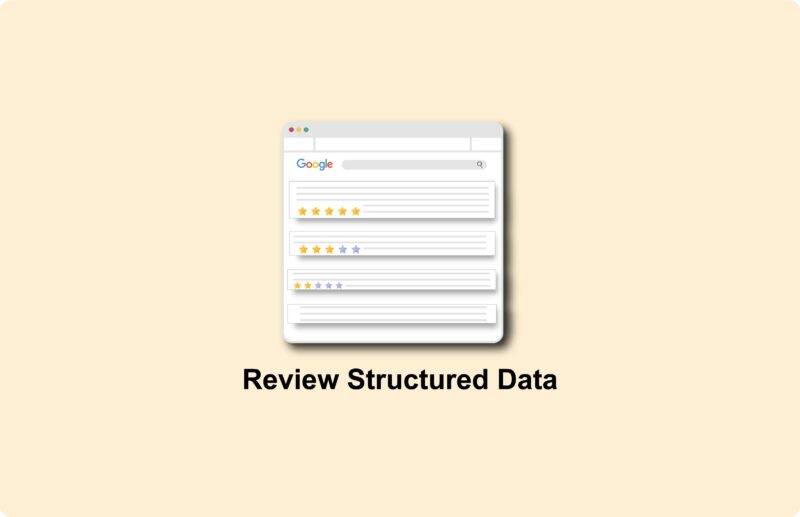What are SEO meta tags and how do I optimize them?

In the background of every website are meta tags for SEO attached to your web pages. These can only be seen in the HTML code. What are meta tags and why are they important for your website? In this article, I discuss the function and high importance of meta tags within search engine optimization.
Meta tags are pieces of code in the HTML code that give specific data about the Web page. This data is important to the search engine. Without this data, the search engine, in many cases Google, cannot properly categorize and rank the Web page. (1)
Based on meta tags for SEO, Google knows how the web page should be displayed in search results. This way, the correct display of the web page is shown. This means that meta tags are crucial for SEO.
SEO meta tags present details about the content found on the website. These tags are primarily intended for Google. Meta tags are in fact in the HTML code. From the outside, they look like the meta title and meta description of the landing page or website. Meta tags must be optimized to best present the website in Google’s search results.
Google sees website usability as its most important asset. This includes the pursuit of providing relevant and quality information. Meta tags contribute to this by displaying concise and relevant information to the searcher.

Getting started with a
SEO specialist?

Ralf van Veen
SEO Specialist
With 11 years of experience, I improve the organic findability of businesses.
There are a number of meta tags made specifically for SEO. Below I show the most important ones with an explanation for each part.
Title tag
There are a number of meta tags that are relevant to SEO. The first meta tag relevant to SEO is the title tag. The title tag is the first element searchers see of your website on the search results page. The purpose of the title tag is to inform the searcher about the content of the web page. In addition, the title tag is often used as anchor text.
This includes ensuring that the title tag is clear and concise. It is important that the title tag be under 56 characters long. Once the number of characters exceeds this limit, the title will be hyphenated by Google. This leads to ambiguity of the exact content.(2)
Meta description
The second meta tag relevant to SEO is meta description. The meta description is just as important as the meta title. It is the piece of text that appears below the title of the search result. The meta description should give an accurate impression of the content actually seen on the landing page or website.
It is the element that determines whether the searcher clicks through to the landing page. Therefore, this is why it is important to optimize the meta description. When the meta description is optimized, it generates more organic traffic.(3)
Canonical tag
The canonical tag is the third meta tag that is important for SEO. When the website contains pages that are almost identical, it is important to indicate which has priority through the canonical tag. The moment you publish duplicate content, you risk a penalty from Google. To avoid this, it is important to use a canonical tag to indicate where any duplicate content is located.(4)
Meta keywords (no longer recommended)
Description: Formerly used to specify keywords for the page, but now largely ignored by most search engines due to past abuse (it is very easy to stuff this piece of code with the keywords you want to rank higher for).
Example:
<meta name="keywords" content="sleutelwoord1, sleutelwoord2"/>
Meta viewport tag
Viewport is the fourth meta tag of great importance to SEO. This tag sets the visible area of a web page. Google uses viewport during the rendering process to display the page in different screen sizes. This means that the website is compatible with a smartphone, tablet or desktop.
This tag ensures that the website is mobile-friendly. In other words, it promotes the usability of a website. Google sees this as a plus during ranking results. When the viewport meta tag is optimized, the website’s organic traffic grows. In short, it is important to optimize these tags.(5)
Getting started with a
SEO specialist?

Ralf van Veen
SEO Specialist
With 11 years of experience, I improve the organic findability of businesses.
Meta Robots tag
Instructions for search engines on how to index and track links on the page. Here, for example, you can specify to index/not index a page (this should actually always be done explicitly, whether you want it or not).
Example:
<meta name="robots" content="index, follow"/>(instructs search engines to index the page and follow links)<meta name="robots" content="noindex, nofollow"/>(no indexing or tracking)
Meta charset tag
Charset stands for character set and refers to the set of characters a computer uses to display and manipulate text. Each character that can be displayed on a screen or stored in a text file has a unique code in the character set used.
Example: <meta charset="UTF-8"/>
Description: Simulates HTTP header responses in HTML elements.
Examples:
<meta http-equiv="refresh" content="30"/>(page reload every 30 seconds)<meta http-equiv="content-type" content="text/html; charset=UTF-8"/>
Description: These tags are used to control how content is displayed when shared on social media.
Open Graph example:
<meta property="og:title" content="Titel Hier"/><meta property="og:description" content="Beschrijving Hier"/>
- Twitter Cards example:
<meta name="twitter:title" content="Titel Hier"/><meta name="twitter:description" content="Beschrijving Hier"/>
Summary
Meta tags play an essential role in both the functional and strategic aspects of web development and SEO. Their overall goal is twofold: to improve the user experience by enabling correct display and interaction, and to optimize the Web page for search engines to increase visibility and traffic to the site:
- Improving the user experience:
- Meta tags such as the
charsettag ensure the correct display of content by specifying the character encoding used, which is crucial for correctly displaying international languages and special characters. - The
viewporttag optimizes display on different devices, which is essential for mobile accessibility.
- Meta tags such as the
- Optimization for search engines:
- Tags such as the
titleanddescriptionimprove SEO by providing search engines with clear, relevant information about the content of the page, which helps rank in search results. - The
robotstag provides instructions to search engines on how to index the page and follow links, which affects search engine visibility.
- Tags such as the
- Control over content display:
- Social media tags (
Open GraphandTwitter Cards) personalize how content is displayed when shared on social media platforms, increasing engagement and click rate.
- Social media tags (
Getting started with a
SEO specialist?

Ralf van Veen
SEO Specialist
With 11 years of experience, I improve the organic findability of businesses.
- Meta Tags and Attributes that Google Supports | Google Search Central | Documentation | Google for Developers. (s.d.). Google For Developers. https://developers.google.com/search/docs/crawling-indexing/special-tags
- Influencing Title Links in Google Search | Google Search Central | Documentation | Google for Developers. (s.d.-b). Google For Developers. https://developers.google.com/search/docs/appearance/title-link
- How to Write Meta Descriptions | Google Search Central | Documentation | Google for Developers. (s.d.). Google For Developers. https://developers.google.com/search/docs/appearance/snippet
- How to Specify a Canonical with rel=”canonical” and Other Methods | Google Search Central | Documentation | Google for Developers. (s.d.). Google For Developers. https://developers.google.com/search/docs/crawling-indexing/consolidate-duplicate-urls
- Has no tag with width or initial scale. (2019, May 2). Chrome For Developers. https://developer.chrome.com/docs/lighthouse/pwa/viewport?hl=nl
Frequently Asked Questions
Meta tags are pieces of text that tell something about a website’s content. They are located in the code of the web page and therefore are not on the web page itself. Meta tags, which are meant to give search engines information about a page’s content, come in different types. These include:
- Title tags: a text that serves as a page title
- Description tags: a short description of the page in question
- Keyword tags: the most important keywords used on a page
- Robots tags: specific information for bots about page interpretation
Meta tags are there to give search engines information about a page’s content. These will be better able to find your page as a result. After all, this makes analyzing the HTML file and managing the file content easier. Meta tags help Google know how to display the website in search results. This results in the correct display of that particular website being able to be shown to users.
Meta tags played a direct role in SEO, or search engine optimization, in the past. Today, their influence on search engine rankings can be called indirect. Meta tags refer to data that search engines like Google in fact help rank and categorize the web page correctly. Similarly, it knows how to display it in search results. Meta tags can also provide search robots (crawlers) with instructions.
If you want to start formulating meta tags, you should keep in mind some recommended guidelines. For example, your tags should always be original, but above all, they should fairly reflect the content of your website. Deception is penalized by Google. So use relevant keywords without letting the content suffer. It is also important to consider the length of meta tags. These are regularly updated by search engines. Keep it short and sweet and work with active, concrete wording.
Optimizing meta tags for SEO means a higher click-through rate, which contributes positively to your ranking within Google search results. Make use of the main keywords of the page, but also consider the length of the meta tags. For example, a meta title averages 55 characters and a meta description 164 (on desktop) or 120 (on mobile device). Provide a relevant description and use search terms at the beginning as much as possible. This is how you ensure that Google displays the meta tags you specify.






